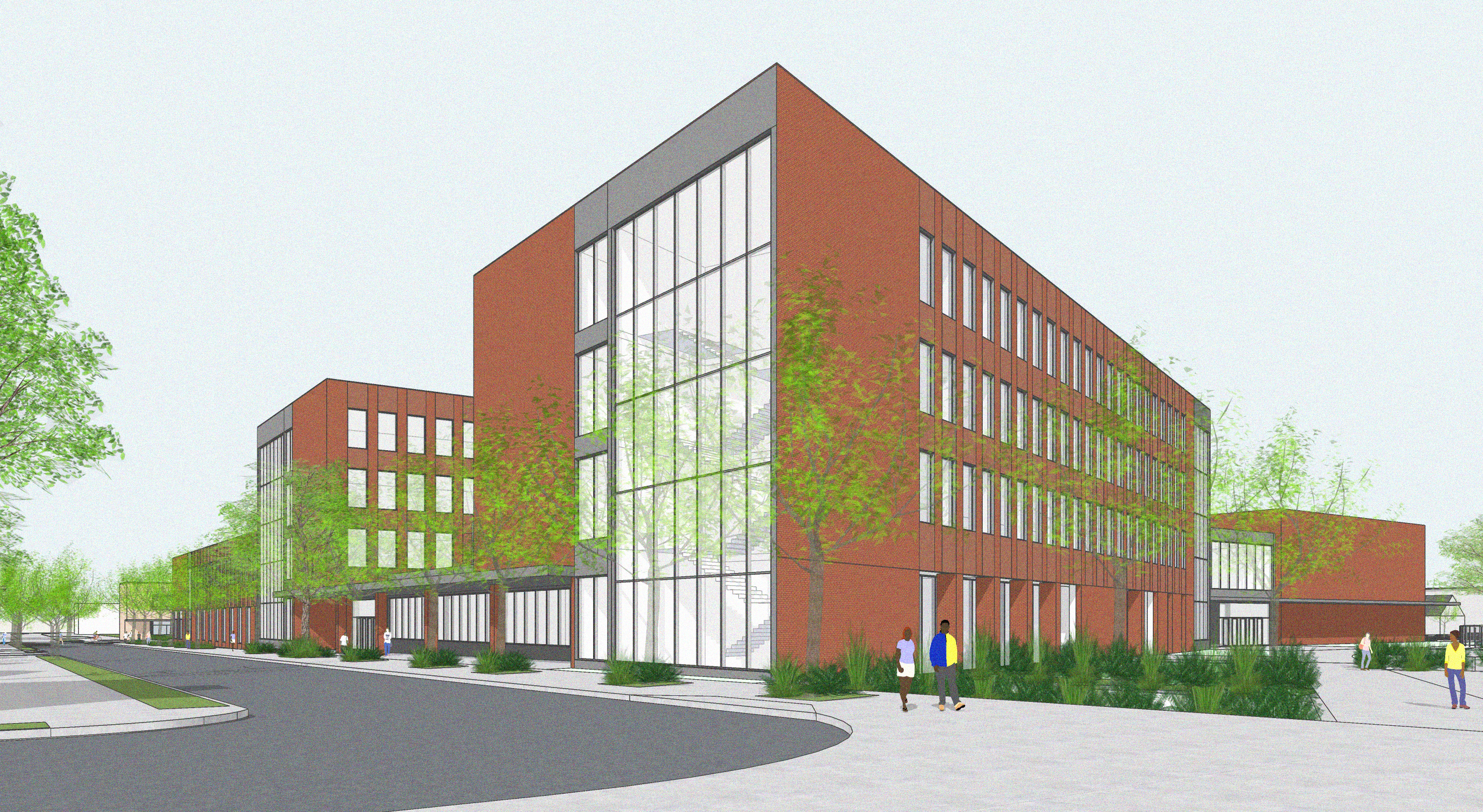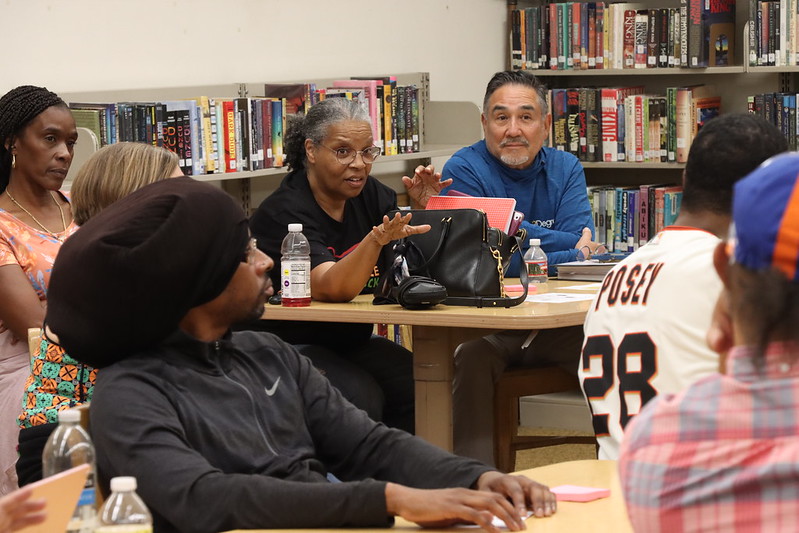-
Jefferson Modernization Planning & Design
The new JHS will be an all-electric multi-story building on the north side of the campus on Killingsworth. The new building will include state-of-the-art academic and support facilities, including specialized instructional spaces for Jefferson’s unique Career Technical Education [CTE] programs. The track and field will be relocated and reoriented, including new grandstands, and there will also be brand new turf baseball and softball fields with new dugouts. Other highlights include a new Jefferson theater, dance studios, centrally located student commons, plus dedicated spaces for local community organizations and a new teen parent center.

-
Upcoming Public Jefferson Modernization Meetings
Jefferson Community Information Update Meeting
Wednesday August 20th, 2025
6-8pm
Jefferson High School Cafeteria
-
Jefferson Community Meetings & Public Workshops
Design Workshop Presentations & Meetings
More Information about Jefferson Modernization Planning & Design
-
Previous Jefferson Project Updates
Jefferson Project Updates
Jefferson March 2024 Project Update
English | Español | Tiếng Việt | Русский | Soomaali | 中文
Jefferson Feb. 2024 Project Update
English | Español | Tiếng Việt | Русский | Soomaali | 中文
Jefferson Jan. 2024 Project Update
English | Español | Tiếng Việt | Русский | Soomaali | 中文
Jefferson Dec. 2023 Project Update
-
Jefferson Design Advisory Group (2023)
Jefferson Design Advisory Group (DAG)
The Jefferson High School Design Advisory Group will meet about every 6 weeks for approximately 6 months and will include members representing students, teachers, alumni, industry professionals, parents, school programs, potential site and/or capital partners, school administration and a school board representative. This group will be involved in developing the design of the modernized Jefferson High School by providing feedback on design details and options proposed by the project team. DAG members perform in an advisory role only. Decisions on project details are the responsibility of the Office of School Modernization in collaboration with other District leadership.
DAG Meeting Presentations
-
Jefferson Comprehensive Planning Committee (2022)
The Jefferson Comprehensive Planning Committee (CPC)
The Jefferson Comprehensive Planning Committee (CPC) is a group of school and community stakeholder representatives who will work together to help provide feedback for the Jefferson Comprehensive Plan. CPC members synthesize community-wide input and share the evolving details of the project with others in the community. The Committee includes parents, teachers, students, alumni, PPS staff and partners, community representatives and a school board member. While CPC members do not make decisions, their input is crucial in creating a design that the entire Jefferson community will be proud of.
Jefferson (CPC) Documents
-
Jefferson Town Halls (2022)
Jefferson Town Halls
- Jefferson Modernization town hall #7 Presentation Nov 2nd 2022
- Jefferson Modernization town hall #7 LiveStream Nov 2nd 2022
- Jefferson Modernization town hall #6 LiveStream Oct 12th 2022
- Jefferson Modernization town hall #5 LiveStream Sept 21st 2022
- Public Questions and Answers from the Sept 21st 2022 Town Hall
- Jefferson Modernization town hall #4 LiveStream Aug 24th 2022
- Jefferson Modernization town hall #3 Presentation June 15th 2022
- Jefferson Modernization town hall #2 Presentation May 17th 2022
- Jefferson Modernization Town Hall virtual meeting #1 March 29, 2022
- Public Questions and Answers from the Jefferson March 29th, 2022 Town Hall
-
Jefferson Modernization Design & Construction Teams
Jefferson Modernization Design & Construction Teams
Bora Architecture & Interiors and LEVER Architects have teamed up for the Jefferson High School Project. This dynamic partnership brings an unmatched, long-term commitment to North/Northeast Portland. Bora has deep K-12 experience and a strong history of successful projects with PPS, and is a national leader in the design of performing arts spaces. LEVER, based in the Jefferson neighborhood, has recently completed the Meyer Memorial Trust Headquarters. Bora and LEVER are joined by Colloqate Design, who will lead the team’s Design Justice-based community engagement process. All three firms are committed to the creation of a vibrant, sustainable, and resilient high school that reflects the values and aspirations of the community.
-
Jefferson FAQ
Jefferson FAQ
-
Jefferson Conceptual Master Planning Committee (2019)
Jefferson Conceptual Master Planning
-
Get Connected
For more information about school building improvement bond projects, email schoolmodernization@pps.net or call us at 503-916-2222



